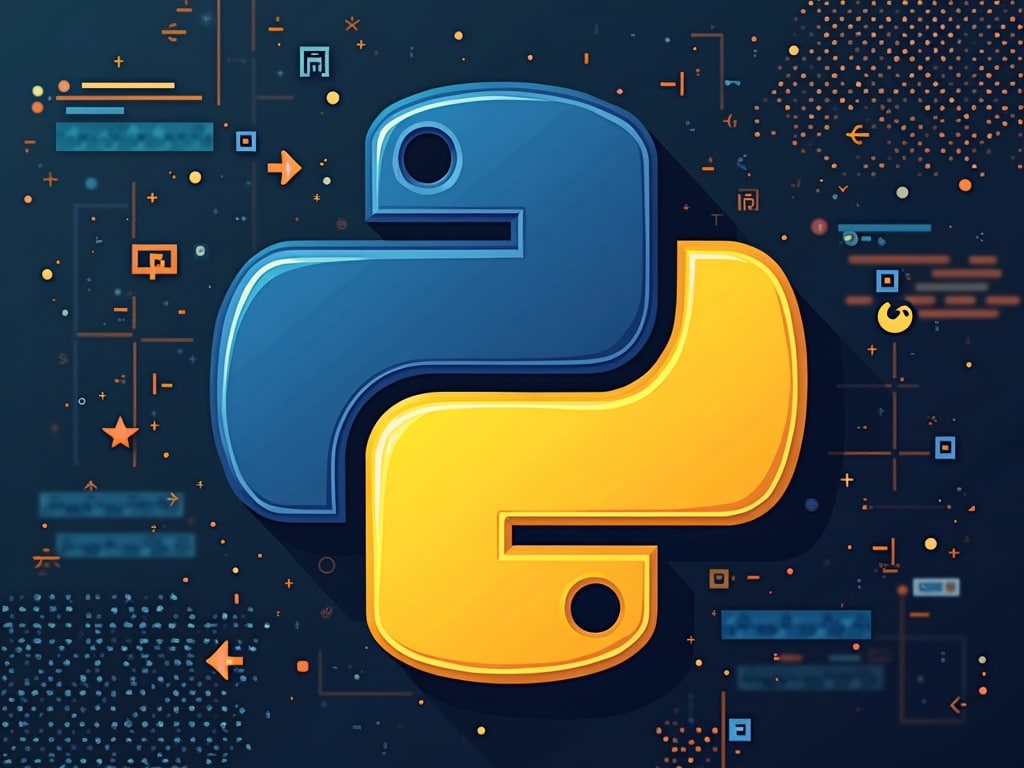How to Write Your First Python Program: A Beginner’s Guide
So, you’re ready to dive into the world of programming, and you’ve chosen Python as your trusty steed? Excellent choice! Python’s known for its readability and versatility, making it perfect for beginners and experts alike. This guide will take you from absolute zero to writing and running your very first Python program. Get ready to unleash your inner coder!
Setting Up Your Python Environment
Before we start slinging code, we need to make sure you have Python installed and ready to go. Think of it like gathering your tools before building a house.
Installing Python
**Windows:Head over to the official Python website (python.org) and download the latest version for Windows. Run the installer, and be sure to check the box that says Add Python to PATH during the installation process. This makes it easier to run Python from the command line.
**macOS:macOS usually comes with a pre-installed version of Python, but it’s often outdated. It’s best to install a more recent version using Homebrew (a package manager for macOS). If you don’t have Homebrew, you can install it by following the instructions on their website (brew.sh). Once you have Homebrew, open your terminal and type `brew install python`.
**Linux:Most Linux distributions come with Python pre-installed. You can check the version by opening your terminal and typing `python3 –version`. If you need to install or update Python, use your distribution’s package manager (e.g., `apt-get install python3` on Debian/Ubuntu, `yum install python3` on Fedora/CentOS).
Choosing A Code Editor
While you *canwrite Python code in a simple text editor, a dedicated code editor will make your life much, *mucheasier. Code editors provide features like syntax highlighting, auto-completion, and debugging tools. Here are a few popular options:
**VS Code (Visual Studio Code):A free, open-source editor with a vast library of extensions. It’s highly customizable and supports Python beautifully.
**PyCharm:A powerful IDE (Integrated Development Environment) specifically designed for Python development. It comes in both a free Community Edition and a paid Professional Edition.
**Sublime Text:A lightweight and fast text editor with excellent Python support. It’s not free, but it offers a trial period.
**Atom:Another free, open-source editor with a similar feature set to VS Code.
For this tutorial, we’ll assume you’re using VS Code, but the principles apply to any code editor. Download and install your chosen editor before moving on.
Writing Your First Python Program: Hello, World!
It’s a tradition in programming to start with a simple program that prints the phrase Hello, World! to the console. This helps you verify that your environment is set up correctly and introduces you to the basic syntax of the language.
Creating A New File
1. Open your code editor.
2. Create a new file (usually by going to File > New File or pressing Ctrl+N/Cmd+N).
3. Save the file with a `.py` extension. For example, `hello.py`. The `.py` extension tells your computer that this is a Python file.
Writing The Code
In your new file, type the following line of code:
python
print(Hello, World!)
That’s it! This single line of code is a complete Python program. Let’s break it down:
`print()` is a built-in function in Python that displays output to the console.
`Hello, World!` is a string literal — the text you want to display. Strings in Python are enclosed in either single quotes (`’`) or double quotes (“).
Running Your Program
Now it’s time to see your code in action!
1. **Open your terminal or command prompt.**
2. **Navigate to the directory where you saved `hello.py`.You can use the `cd` command (change directory) to move around. For example, if you saved the file in your Documents folder, you might type `cd Documents`.
3. **Run the program by typing `python hello.py` (or `python3 hello.py` if you’re using Python 3).**
If everything is set up correctly, you should see Hello, World! printed on your console. Congratulations, you’ve just run your first Python program!
Understanding Basic Python Syntax
Now that you’ve successfully printed Hello, World!, let’s delve into some fundamental Python concepts.
Variables
Variables are like containers that hold data. You can store numbers, text, or more complex data structures in variables.
python
message = Hello, Python!
number = 10
print(message)
print(number)
In this example:
`message` is a variable that stores the string Hello, Python!.
`number` is a variable that stores the integer 10.
The `print()` function displays the values stored in these variables.
Data Types
Python has several built-in data types, including:
**Integer (int):Whole numbers (e.g., 10, -5, 0).
**Float (float):Decimal numbers (e.g., 3.14, -2.5).
**String (str):Text (e.g., Hello, Python).
**Boolean (bool):True or False values.
You can use the `type()` function to check the data type of a variable:
python
x = 5
y = 3.14
z = Python
print(type(x)) # Output:
print(type(y)) # Output:
print(type(z)) # Output:
Operators
Operators are symbols that perform operations on values and variables. Python supports various operators, including:
**Arithmetic Operators:`+` (addition), `-` (subtraction), `*` (multiplication), `/` (division), `//` (floor division), `%` (modulo), `**` (exponentiation).
**Comparison Operators:`==` (equal to), `!=` (not equal to), `>` (greater than), `<` (less than), `>=` (greater than or equal to), `<=` (less than or equal to).
**Logical Operators:`and`, `or`, `not`.
**Assignment Operators:`=`, `+=`, `-=`, `*=`, `/=`, etc.
Here are some examples:
python
a = 10
b = 5
print(a + b) # Output: 15
print(a > b) # Output: True
print(a == b) # Output: False
a += b # a = a + b
print(a) #Output: 15
Comments
Comments are notes that you add to your code to explain what it does. They are ignored by the Python interpreter. You can add a single-line comment using the `#` symbol. For multi-line comments, you can use triple quotes (`”’` or “).
python
# This is a single-line comment
print(Hello) # This comment explains the print statement
”’
This is a
multi-line comment
that explains a block of code.
”’

Controlling Program Flow
Control flow statements allow you to execute different blocks of code based on certain conditions.
`if`, `elif`, `else` Statements
The `if` statement executes a block of code if a condition is true. The `elif` (else if) statement checks another condition if the previous `if` condition is false. The `else` statement executes a block of code if none of the previous conditions are true.
python
age = 20
if age >= 18:
print(You are an adult.)
elif age >= 13:
print(You are a teenager.)
else:
print(You are a child.)
`for` Loops
The `for` loop iterates over a sequence of items (e.g., a list, a string, or a range of numbers).
python
fruits = [apple, banana, cherry]
for fruit in fruits:
print(fruit)
`while` Loops
The `while` loop executes a block of code as long as a condition is true.
python
count = 0
while count < 5:
print(count)
count += 1
Basic Input and Output
We’ve already seen how to use the `print()` function to display output. Now, let’s learn how to get input from the user.
The `input()` Function
The `input()` function prompts the user to enter some text and returns it as a string.
python
name = input(Enter your name: )
print(Hello, + name + !)
Converting Input to Numbers
The `input()` function always returns a string. If you need to work with numbers, you’ll need to convert the input to an integer or a float using the `int()` or `float()` functions.
python
num1 = input(Enter the first number: )
num2 = input(Enter the second number: )
# Convert the input to integers
num1 = int(num1)
num2 = int(num2)
print(The sum is:, num1 + num2)
Writing a Slightly More Complex Program: A Simple Calculator
Let’s put everything we’ve learned together to create a simple calculator that can add, subtract, multiply, and divide two numbers.
python
# Get input from the user
num1 = float(input(Enter the first number: ))
num2 = float(input(Enter the second number: ))
operation = input(Enter the operation (+, -, *, /): )
# Perform the calculation based on the operation
if operation == +:
result = num1 + num2
elif operation == -:
result = num1 – num2
elif operation == *:
result = num1 num2
elif operation == /:
if num2 == 0:
print(Error: Cannot divide by zero.)
result = None #Indicate an error occurred
else:
result = num1 / num2
else:
print(Error: Invalid operation.)
result = None #Indicate an error occurred
# Display the result, only if there wasn’t an error
if result is not None:
print(The result is:, result)
This program demonstrates how to get input from the user, perform calculations based on conditions, and display the output.
Where To Go Next
Congratulations! You’ve taken your first steps in the exciting world of Python programming. By now, you should have a basic understanding of Python syntax, data types, control flow, and input/output. You did it!
But this is just the beginning, keep following this path to progress in your fantastic Python journey:
**Learn about data structures:Lists, tuples, dictionaries, and sets are fundamental to Python programming.
**Explore functions:Learn how to define your own functions to reuse code and make your programs more modular.
**Dive into object-oriented programming (OOP):OOP is a powerful paradigm that allows you to model real-world objects in your code.
**Work on projects:The best way to learn is by doing. Try building small projects like a number guessing game, a to-do list application, or a simple web scraper.
**Explore libraries and frameworks:Python has a rich ecosystem of libraries and frameworks for various tasks, such as web development (Django, Flask), data science (NumPy, Pandas, Scikit-learn), and machine learning (TensorFlow, PyTorch).
**Join the Python community:Connect with other Python developers online through forums, mailing lists, and social media.
With practice and persistence, you’ll become a proficient Python programmer in no time. Happy coding!
